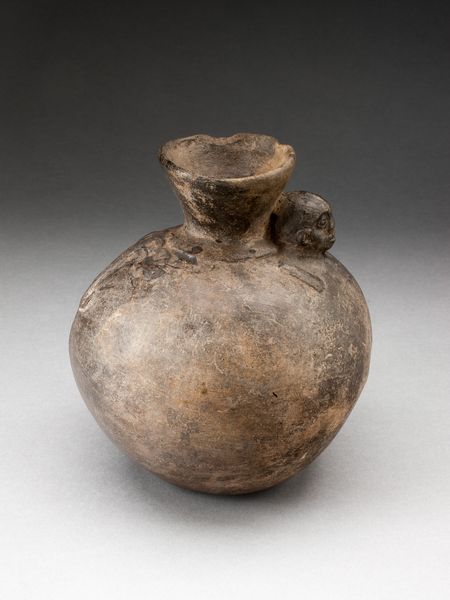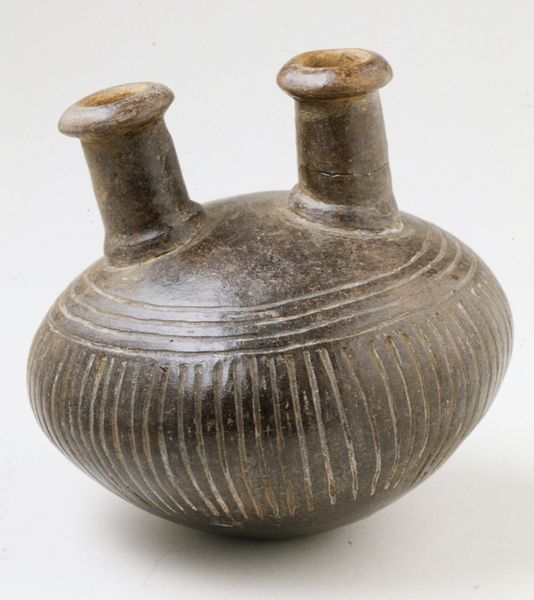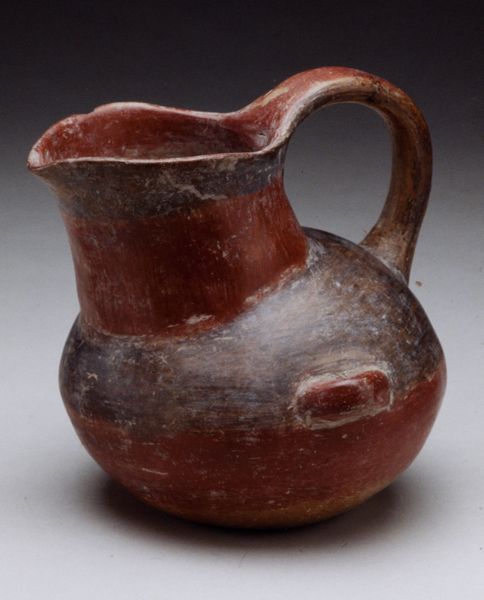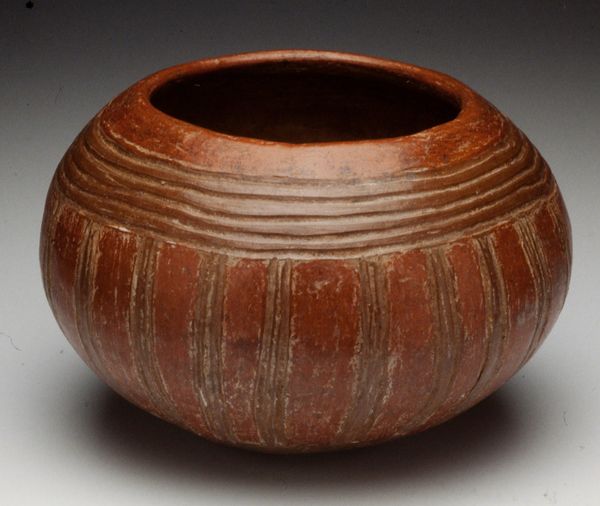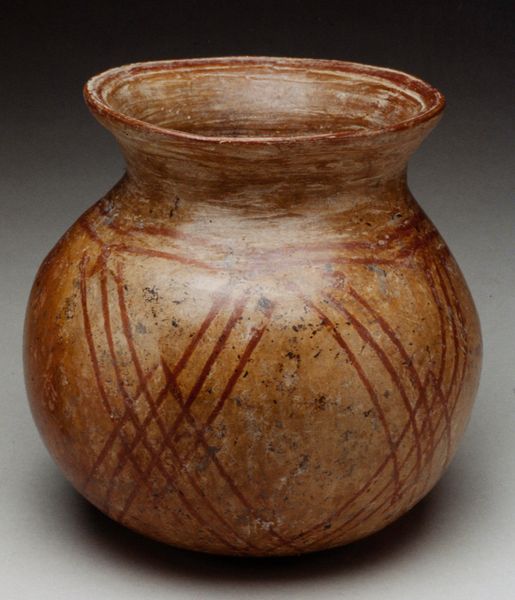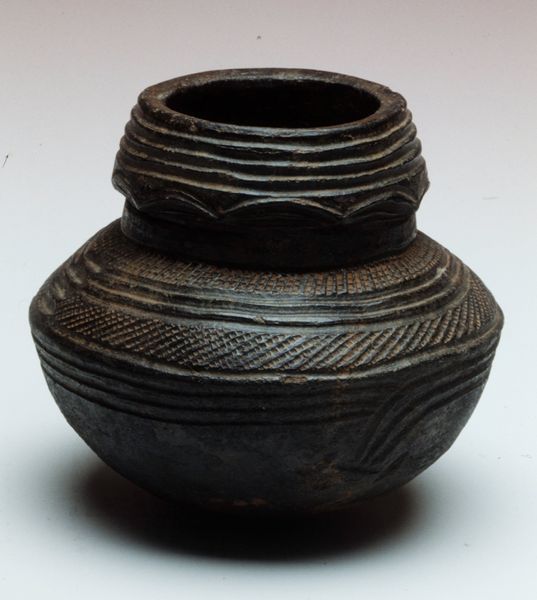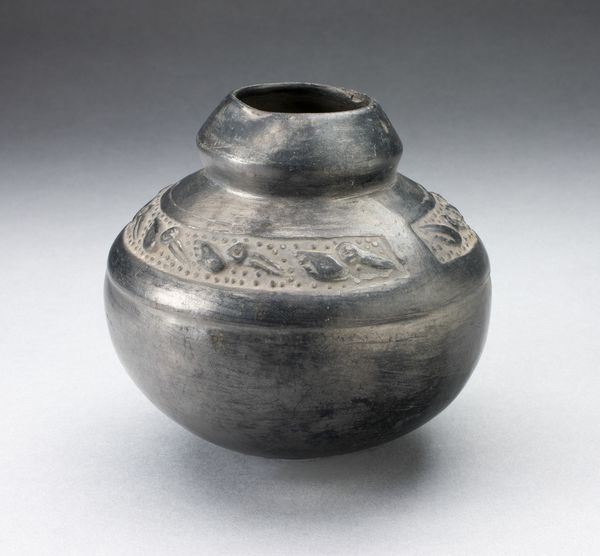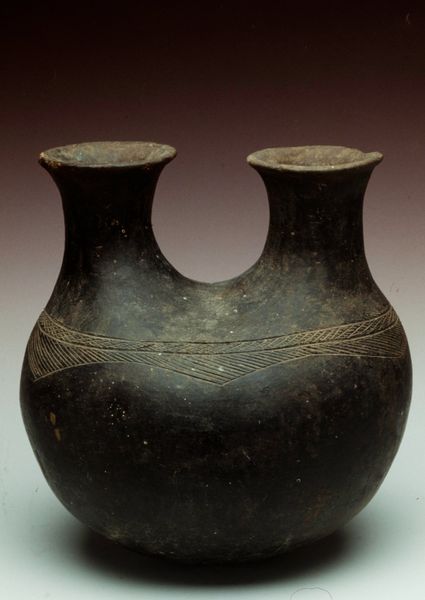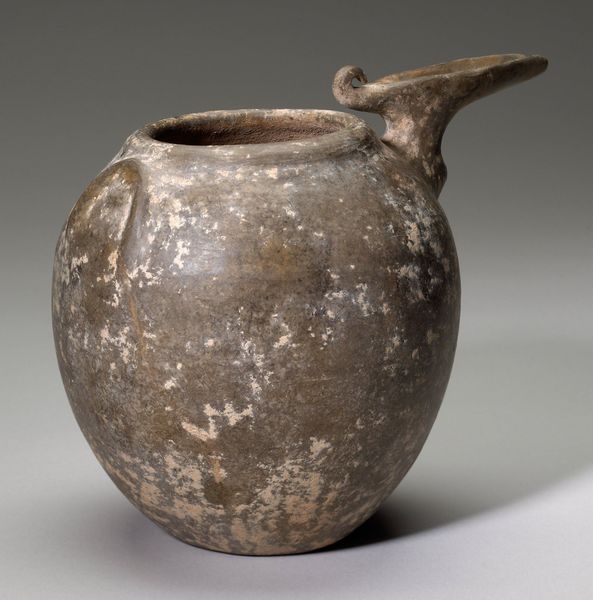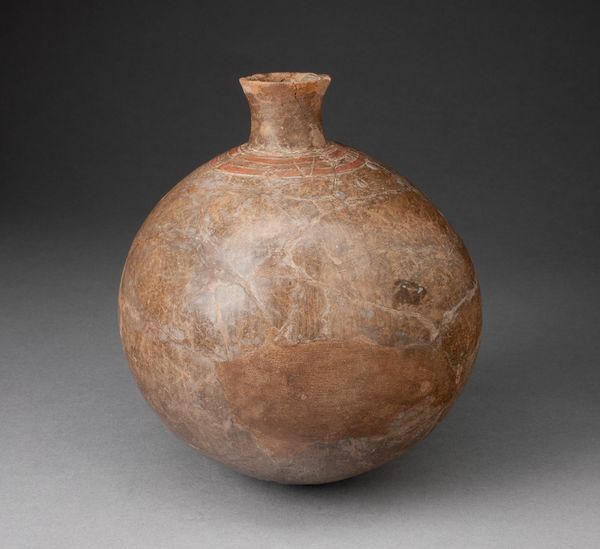
ceramic, earthenware
#
ceramic
#
earthenware
#
ancient-mediterranean
Dimensions: 6 x 9 1/2 x 6 in. (15.24 x 24.13 x 15.24 cm)
Copyright: Public Domain
Curator: This object is a melon-shaped earthenware bowl, currently residing here at the Minneapolis Institute of Art. We believe it dates from the 8th to 11th century. What are your first thoughts, Editor? Editor: The most striking thing to me is the simplicity. It's beautifully imperfect, with visible marks of the maker and an organic form that feels both ancient and deeply human. There's an almost meditative quality to its unassuming presence. Curator: Indeed, its form speaks volumes, doesn't it? The melon shape itself likely held symbolic significance. In many cultures, fruits like melons represented fertility, abundance, and nourishment. It's intriguing to think of the cultural beliefs associated with it. Editor: It raises questions about what rituals, what specific foods, were connected with its use. Consider also the handles; those little "ears" add a quirky touch, making me wonder about accessibility in relation to social role, the division of labor, perhaps who could and would have the privilege to handle it. Curator: Exactly, it offers a glimpse into everyday life. Imagine the hands that shaped it, the community that relied on it. These objects were vital in both symbolic and utilitarian terms; that constant dialogue between art and utility seems to have had profound significance. Editor: Its rough texture and subdued color palette, for me, signal an intimate connection with the earth. This isn't some gilded object meant for display, it's embedded in the real-world experiences of an ancient civilization, its unpretentious practicality also a potent marker of cultural difference. Curator: I agree entirely. In a way, its humility becomes its strength, whispering narratives about a people long past. What strikes you as its most impactful quality now? Editor: The quietness of its existence. It has survived through centuries, speaking of sustainability and ancient worlds; it reminds us how very differently previous societies looked to and respected materials. Curator: Ultimately, I suppose, that connection transcends its humble function and serves as a compelling connection to our shared past.
Comments
No comments
Be the first to comment and join the conversation on the ultimate creative platform.
